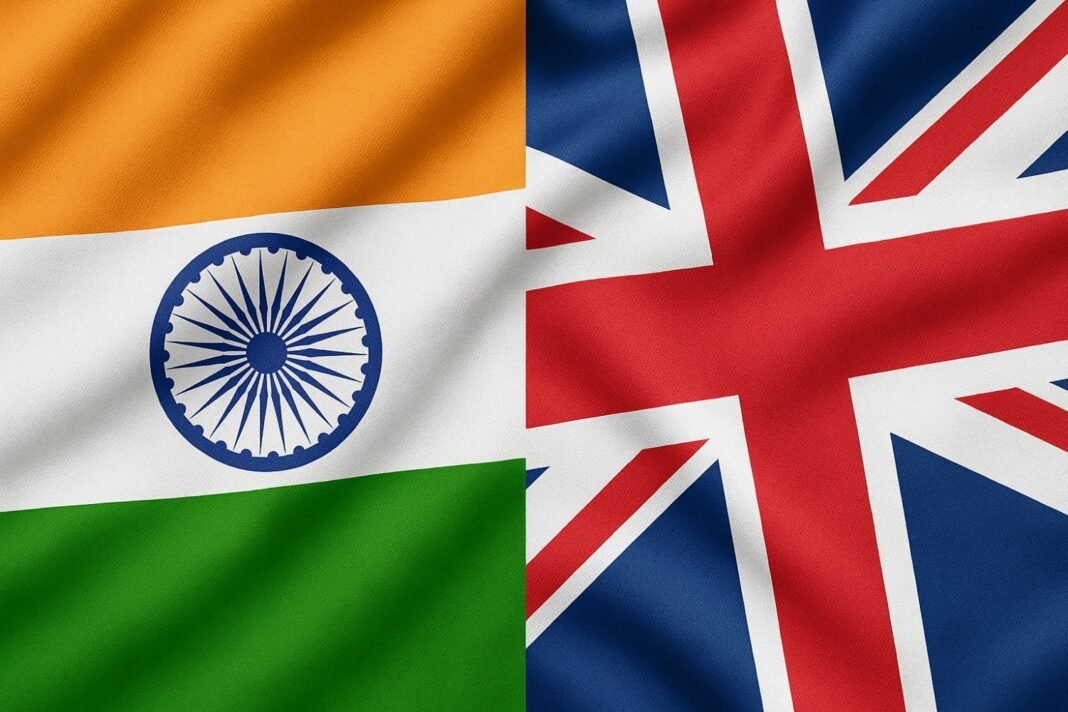In a landmark moment for India’s global trade ambitions, New Delhi and London have officially signed the India–UK Free Trade Agreement (FTA), hailed as a “game‑changing” and “gold‑standard” pact by India’s Commerce Minister, Piyush Goyal.Negotiated over more than three years and formally concluded on 24 July 2025, this historic Comprehensive Economic and Trade Agreement (CETA) marks India’s first major FTA with a developed economy and the UK’s most significant post‑Brexit trade deal.
Zero‑Duty Access for Indian Exports
Under the agreement, 99% of Indian export tariff lines—effectively nearly the entire value of goods—will now enter the UK duty‑free. This sweeping liberalisation covers key export sectors including textiles, leather, gems and jewellery, agricultural and marine products, toys, auto components, engineering goods, pharmaceuticals and chemicals.Analysts expect sectors such as textiles and engineering to see export growth of 30–45%, while India’s marine exports could enjoy a $5.4 billion opportunity with tariff barriers eliminated.
Balancing Protection and Expansion
Despite the broad opening, India has safeguarded strategic domestic interests: sensitive sectors like dairy, rice, sugar and ethanol remain shielded, with no duty concessions granted.Conversely, UK exports—spanning whisky, gin, automobiles, cosmetics, chocolates, lamb and salmon—will benefit from phased tariff reductions over the next decade; for example, tariffs on Scotch whisky are slated to fall from 150% to 40% .UK duties in India are projected to decline from around 15% on average to just 3%, opening up access to roughly 90% of UK export lines.
Strategic Gains Beyond Goods
The agreement also delivers significant benefits for services and mobility across borders. A Double Social Security Contribution Convention enables cost savings for Indian professionals in the UK, particularly in audit, accounting and legal services.The UK’s first-ever services commitments under an FTA with India reflect deepening cooperation in digital, financial, legal and consulting sectors.
Perceived as a Model Deal
Piyush Goyal has described the FTA as “signed on India’s terms”, insisting no compromise was made on key agricultural and agro-ethanol sectors.He called it the most comprehensive and important FTA India has ever struck, and has labelled it a “gold standard” for future high-level trade accords with advanced economies.India’s Cabinet has already approved the deal; final parliamentary approval in the UK is pending, with implementation expected by mid‑2026.
Economic Impact and Growth Projections
Bilateral trade between India and the UK currently stands at approximately $56–60 billion. With the FTA, trade is projected to double to $110–120 billion by 2030, and bring in upwards of £25.5 billion in additional annual trade value by 2040.The UK expects an economic boost of roughly £4.8–5 billion per year from this partnership by mid‑century.
Winners Across India’s Economy
The Indian MSME ecosystem, especially in textile hubs like Tiruppur, Surat, Moradabad, Kanpur and Ludhiana, is set for a surge in opportunities, with projected job creation in the hundreds of thousands across labour-intensive sectors.Tourism and regional economies such as Tamil Nadu and Goa have also been flagged as prime beneficiaries; the Goa Chamber of Commerce points to gains in IT, pharmaceuticals, and manufacturing, while Prime Minister Modi highlighted benefits to youth, startups and coastal exporters from Tamil Nadu.Rajasthan’s gems, jewellery and textiles sectors are likewise projected to gain export growth worth ₹3,000–5,000 crore.
Looking Ahead: A Template for Future Deals
This deal signals a strategic shift in India’s trade policy: engaging selectively, protecting core domestic sectors, and pursuing high-value partnerships with like-minded advanced economies. The success of the India–UK FTA is expected to inform future negotiations with the EU and the U.S.—though talks with the latter are expected to confront tougher demands on agriculture and dairy open‑ups under the Trump administration.In sum, the India–UK FTA is a watershed in India’s trade trajectory, offering new opportunities for export-led growth, enhanced service mobility, and strategically aligned economic cooperation—all while preserving sensitive domestic interests.








